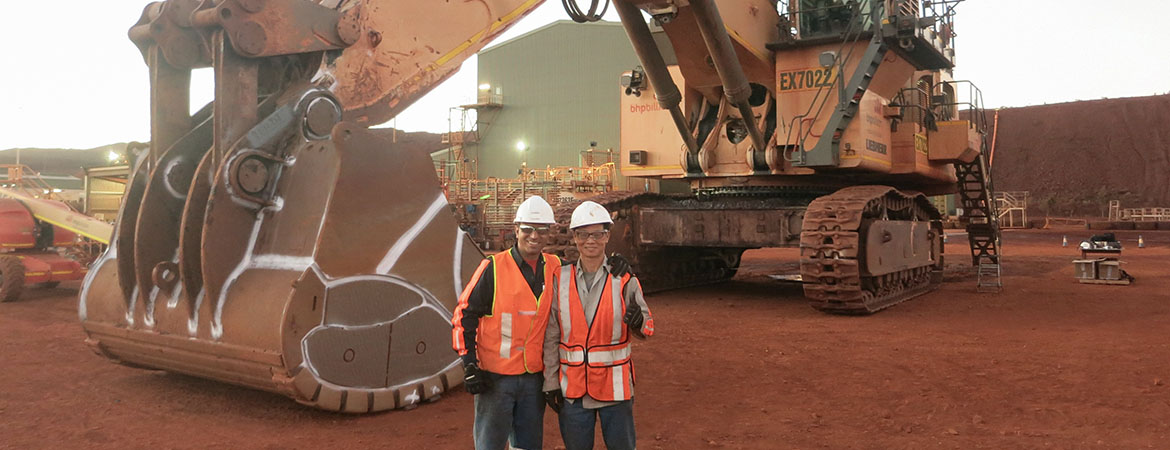Motion Metrics International detects further market opportunities abroad
Mark Mukhija , Australia Regional Sales Manager, and Hairong Zeng, Senior Systems Engineer with Motion Metrics.
A mine shovel is a huge machine. The loss of just one or two of its metal teeth can be costly, dangerous and can seriously disrupt production targets. The broken tooth can fall into the shovel bucket and find its way into the ore crusher, where it can cause serious damage to machinery. That also poses a safety risk to employees who have to get into the crusher to retrieve the tooth.
Enter Motion Metrics International, a Vancouver-based company whose ShovelMetrics system uses high-resolution cameras and artificial intelligence to detect missing or worn shovel teeth. An alarm sounds if a tooth breaks off. The system also provides detailed particle-size analysis of the material loaded into the shovel bucket, which is valuable information for blasting engineers.
Motion Metrics estimates that its detection system helped the Los Pelambres copper mine in Central Chile avoid a production loss of 144 hours in 10 months.
Bolstered by annual revenue growth of more than 30% over the past three years, the company now has more than 75 employees in Canada, Chile, and South Africa. It opened an office in Perth, Australia last year.
International trade agreements help to reduce barriers to export growth, says Jodie Davies, marketing manager. “Canada has free trade agreements with the U.S., Chile, and Peru, which are some of our biggest customers,”
she says.
Like Canada, Australia also a signatory to the Comprehensive and Progressive Agreement for Trans-Pacific Partnership (CPTPP), and Davies sees the new Perth office “as a great step for us to further tap into the Asia Pacific region further.”
Having a home base in Vancouver brings numerous other advantages. Motion Metrics’ head office is on the University of British Columbia campus, giving it access to an abundant supply of engineering and scientific talent to develop new products. In March 2018, for example, Motion Metrics applied its artificial intelligence and stereo-imaging expertise to develop a system that detects the size of particles of ore being carried on mine conveyor belts. It also sounds an alert when a belt is empty, which can indicate that an upstream screen or chute is blocked.
Motion Metrics has tapped into numerous Government of Canada programs, such as the Industrial Research Assistance Program, the Scientific Research and Experimental Development tax credit, and CanExport, which covers up to half of small and medium-sized businesses’ export marketing expenses.
Even Canada’s weather has an upside. Davies notes that “Canada is a great testing ground that allows us to expose our solutions to diverse mining environments from -40 to +40 degrees Celsius.”
- Date modified:
